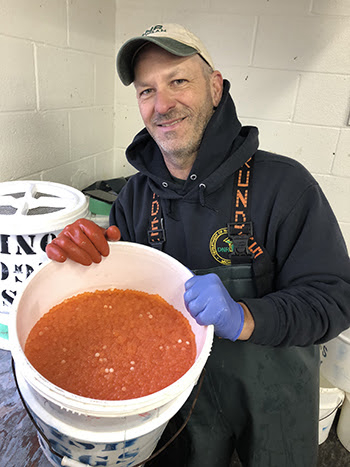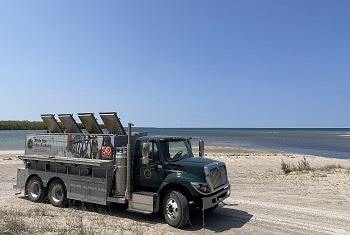Michigan: Chinook and coho salmon runs begin as DNR gears up for egg takes

The days are getting cooler, the leaves are beginning to change and the salmon are starting their annual spawning runs – all signs that the Michigan Department of Natural Resources is preparing for Chinook and coho salmon egg takes.
Managing Michigan’s world-class fisheries is dependent on egg takes each fall. Salmon return to the rivers and streams where they were hatched or stocked. To aid in annual egg collection, the DNR has strategically placed weirs in rivers with high concentrations of spawning salmon.
DNR facilities begin operations in mid-September and complete the process in late October for all Pacific salmon egg takes. Though the egg collection work is scheduled, the DNR team will act only when there are sufficient numbers to indicate the fish are ready. Conditions can vary day to day.
DNR staff conduct egg takes not only to support Michigan’s yearly fish production goals, but also to assist other Great Lakes states in meeting their fishery needs. This season, portions of Michigan-collected eggs will be directed to Illinois and Indiana.
Chinook egg takes occur on the Little Manistee River at the Little Manistee River Weir facility. This work typically occurs during the first week of October. The DNR plans on collecting 2.5 million eggs for Michigan’s waters, as well as 600,000 eggs for Indiana and 800,000 eggs for Illinois, in support of each state’s salmon stocking programs.
Coho egg takes on the Platte River at the Platte River State Fish Hatchery typically occur during the third week of October. The DNR plans on collecting 3 million eggs for Michigan’s waters, as well as 1.1 million for Indiana and 1 million for Illinois.
All eggs collected for out-of-state needs are reared in that state’s hatchery facilities and stocked in the Great Lakes.
Egg take operations are open to the public to allow visitors to see these amazing fish and the process of harvesting their eggs. Weir tours combined with education and outreach efforts bring classrooms and hundreds of students to the facilities every year to learn about the life cycle of fish, invasive species, the history of salmon in the Great Lakes and the DNR programs that manage and sustain these prized fisheries.
For a detailed explanation of the life cycle of a Chinook salmon, view our Chinook Salmon Lifestages video. To learn more about the work at Michigan’s state fish hatcheries or to plan a trip to see the egg take activities, visit Michigan.gov/Hatcheries.
For everyone’s safety, people not yet fully vaccinated against COVID-19 are encouraged to wear face masks when inside buildings open to the public.






